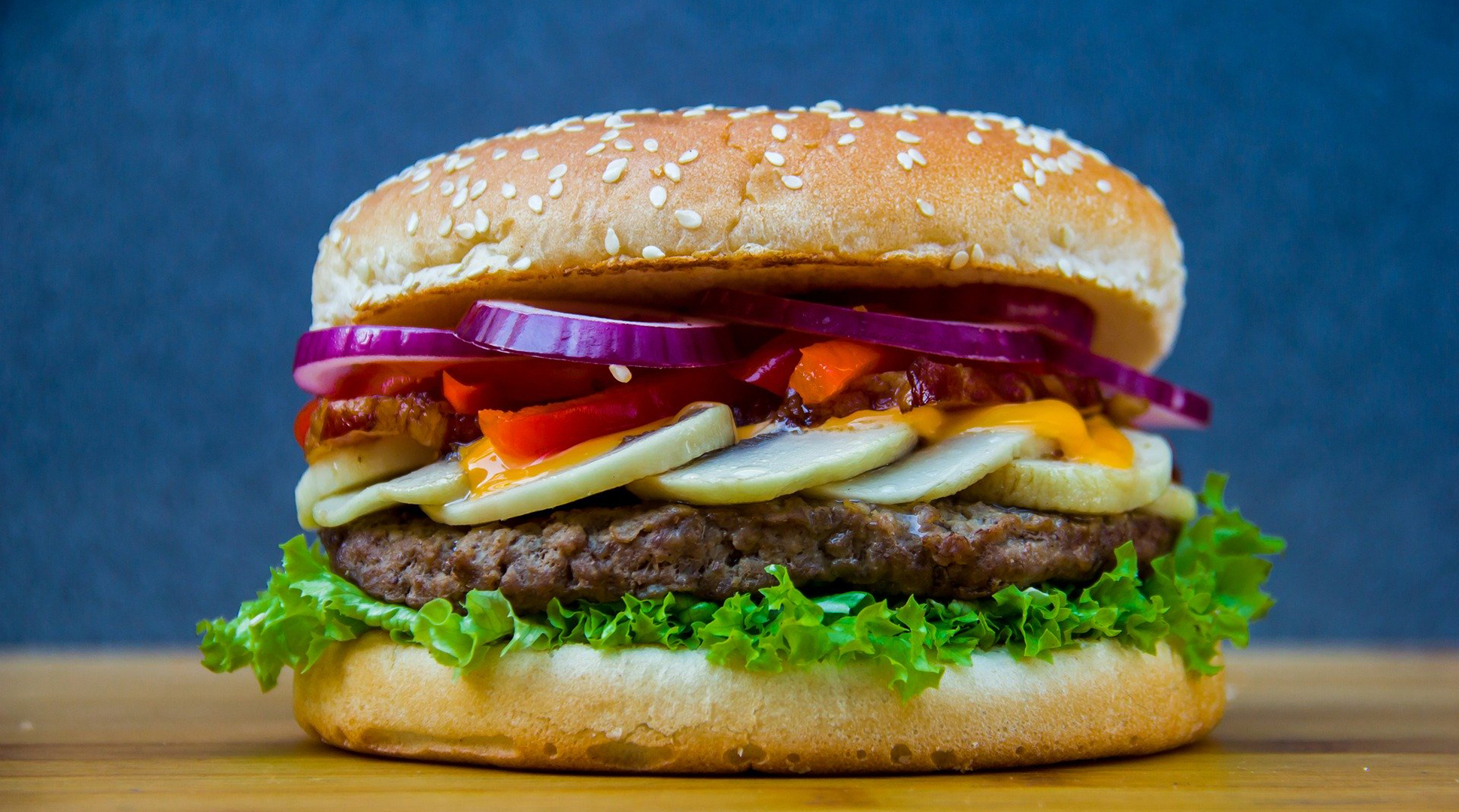Image by roobertoo from Pixabay
By Julie Garden-Robinson, Food and Nutrition Specialist, NDSU Extension
"How scientific do you want to be?" my husband asked.
I set the tray at the fast-food restaurant in front of him.
"I just want to be objective," I replied.
I didn't have a sensory evaluation booth handy, where we could change the lights to disguise the sandwiches.
I had seen an ad for the plant-based "burger" on TV and I wanted to try it. The sandwiches were heavily promoted in 2019, and the "buzz" has settled a bit.
I purchased one sandwich with a plant-based patty. The other sandwich had a beef patty.
I unwrapped the two sandwiches and we studied them. They looked almost identical. However, the plant-based patty didn't look quite as succulent and glistening as the one on TV.
Actually, neither of the sandwiches looked as good as the ones on TV or on the posters in the restaurant.
Both sandwiches were the same size, with the same sesame seed-studded buns. When I lifted the upper bun, I noted the sliced tomatoes, onions, lettuce and the layer of mayonnaise on each.
I cut the sandwiches in half so each of us could taste and compare them.
If anyone was watching us study our food, they probably thought we were a peculiar couple.
I guess we are kind of eccentric now and then.
Most people have heard of plant-based "meat alternatives," also known as meat analogues, meat substitutes, mock meat, imitation meat, fake meat or other terms.
In full disclosure, my husband and I are "omnivores." We eat almost any food, whether it is plant- or animal-based. Neither of us would be considered a "picky" eater.
I sniffed both sandwiches, and each had a distinctive char-broiled aroma. My husband took the first bite and I watched his expression.
"It's not offensive," he noted after tasting the plant-based sandwich.
I chuckled at his comment, which would make food scientists cringe. I'm sure they were going for "delicious." I glanced at him, so he clarified his remark.
"It's actually not bad," he added.
That was a true Midwestern comment. Does "not bad" mean "pretty good"?
I cut a piece of the plant patty away from all the toppings and slowly chewed it. I found the plant patty to be chewier and drier than the beef patty.
We agreed that the plant patty had a more charred flavor. The char-broiled stripes looked to have been applied in some way. The plant patty also seemed saltier to my taste buds.
In all fairness, the restaurant's beef patty wasn't as flavorful or juicy as the burgers we cook on our backyard grill, either.
The plant-based sandwich was more expensive by about a dollar.
Here was the real test for the purpose of this column. Was one sandwich more healthful than the other?
Not really.
The plant-based sandwich had about 630 calories, with 34 grams of fat and 25 grams of protein, while the beef-based sandwich had 660 calories, 40 grams of fat and 25 grams of protein. In other words, nutritionally they were similar.
We were correct that the meatless sandwich had more sodium per serving, with about 300 milligrams more than the beef-based sandwich.
In other words, you are not going to lose weight by making this swap, and you are not going to do your blood pressure any good with the extra sodium. Compare the nutrition facts on your food choices, and check out the ingredient list.
Almost every week in this column, I promote eating more vegetables as part of the current nutrition recommendations. We should fill half of our plates with fruits and vegetables, with the goal of at least 4 1/2 cups of produce daily.
I'm not going to change that recommendation this week. Only about one in 10 adults meets the daily recommendation for plant foods. However, is swapping in plant-based "burgers" the answer to a more healthful diet?
I don't think so.
The plant-based "burgers" contain many ingredients, compared with the animal-based counterparts.
The ingredient statements on meat alternatives (depending on the brand) usually list a combination of soy protein, pea protein and/or rice protein, various vegetable oils, cornstarch, binding agents (so the ingredients stay together), salt, spices, natural and artificial flavorings, colorants, and added vitamins and minerals.
The ingredient statement on a package of beef at the butcher counter would state "beef." The protein, vitamins, minerals, flavor and color are naturally present.
If you want more plant protein in your diet, enjoy some soy-based tofu in a vegetable stir-fry, fiber-rich split pea soup, savory hummus dip (from chickpeas) and beans of all types in soups, salads and casseroles. Visit https://www.ag.ndsu.edu/food to explore the wide range of food and nutrition information with accompanying recipes, including the mentioned ones.
Think about your eating pattern. Do you include foods from all the food groups?
Julie Garden-Robinson, Ph.D., R.D., L.R.D., is a North Dakota State University Extension food and nutrition specialist and professor in the Department of Health, Nutrition and Exercise Sciences. Follow her on Twitter @jgardenrobinson
